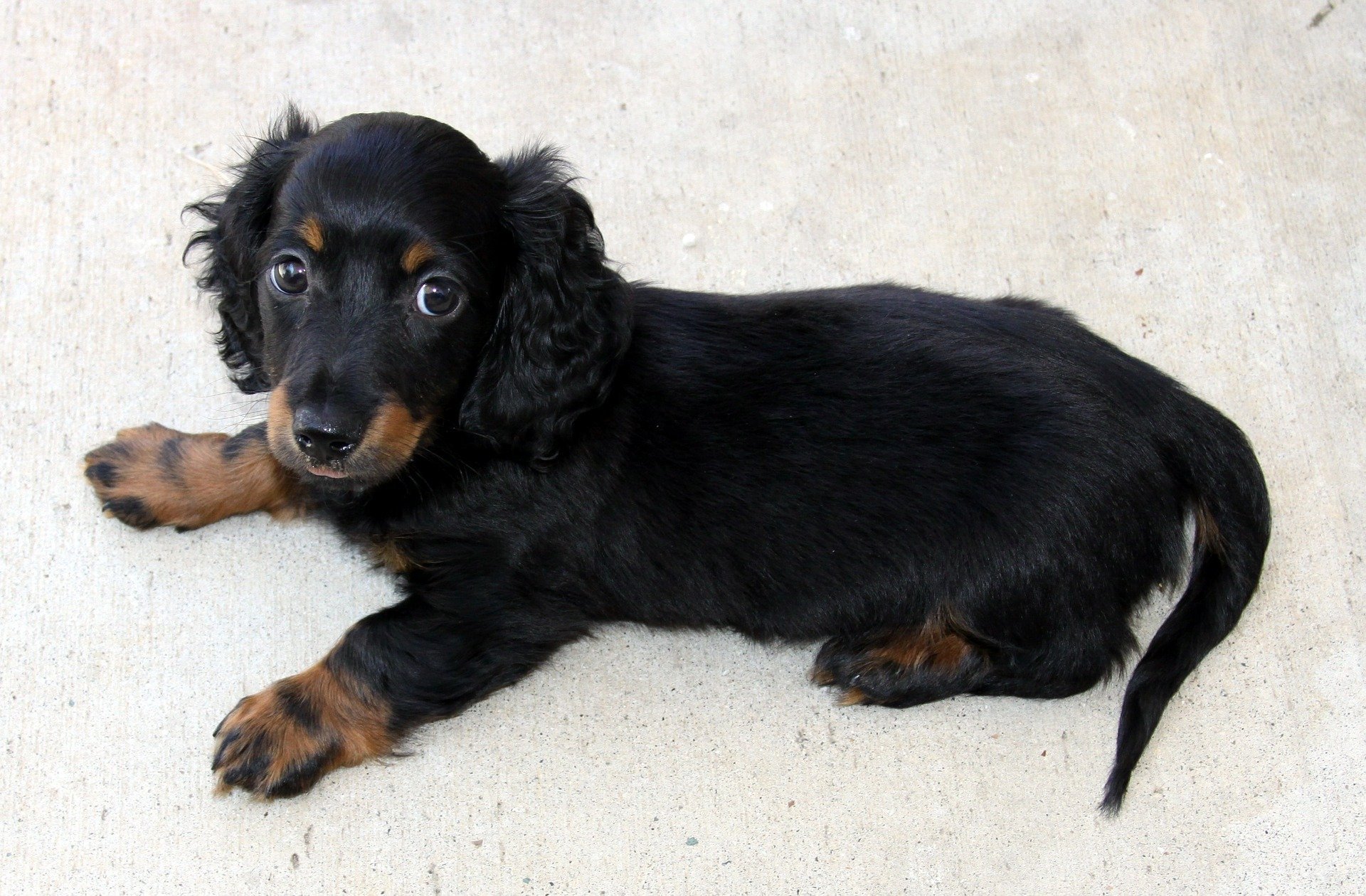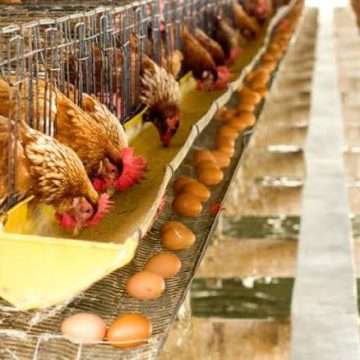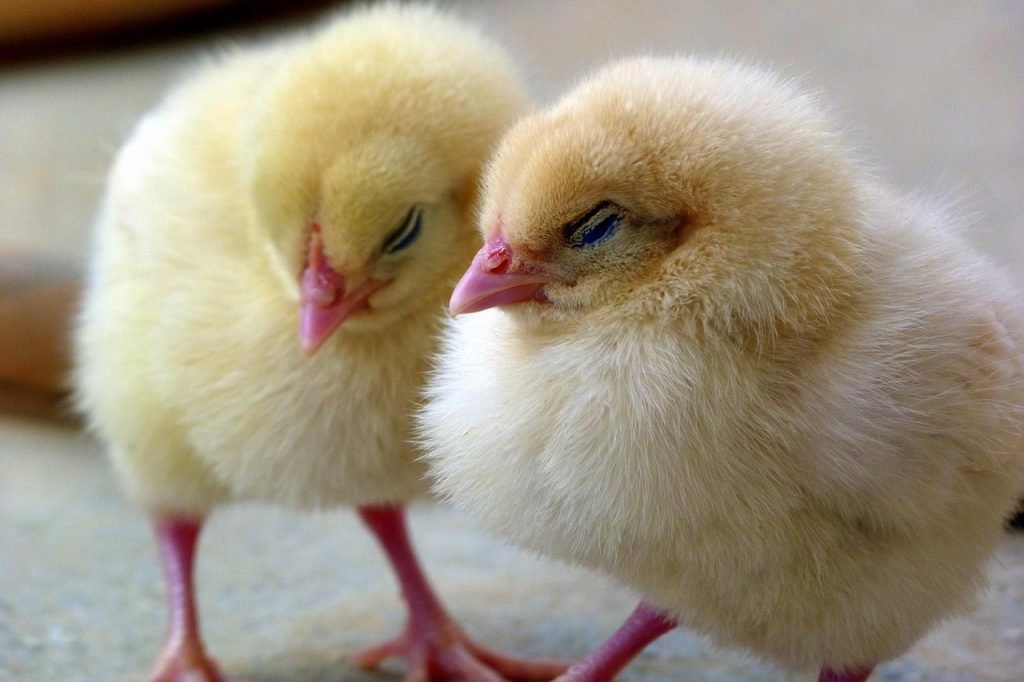Brooding day-old chicks demand a lot of care and can make a big difference in poultry productivity.
The importance of brooding in poultry can not be overemphasized.
Either layer chickens, broilers, cockerels, etc, buying them at a day old means you can save cost rather than buying them a few weeks old.
You can also be sure the birds will get the necessary vaccines when due.
However, a poultry farmer needs to understand the major factors that contribute to successful brooding.
They are temperature, light, ventilation, and humidity
Poultry Brooding Requirements
- Chick brooder temperature
The chicks need extra heat during the first 3 to 6 weeks of their lives – This is the brooding period.
You need to provide sources of heat for the chicks during this period it is the most important requirement in brooding.
Three to five lamps placed on the floor or over four 1oo watts bulbs or two 200 watts bulbs hung 15 to 30cm from the floor can be used to provide sufficient heat for 100 chicks.
To confine the heat to a particular area, hovers or brooder boxes may be provided.
A hover is a round or angular piece of iron that covers the heat source and deflects the heat downwards.
Brooder boxes or canopies also enclose the heat source and help to confine the heat.
To make sure that the chicks do not stay away from the heat source, they should be confined to the heated area by a means of a brooder guard.
The brooder guard also protects the birds from floor draughts, and materials such as cardboard.
Wire mesh, aluminum or zinc sheets, ceiling boards, and cement blocks may be used as brooder guards to form a ring around the heating system.
The brooder guard should be placed about 60 to 90cm from the hover or brooder box.
The guard may be removed from the house after 7 days.
Once started, the birds are the best indicators of the correct temperature.
The ideal temperature to start within the brooding house is 33 to 35 degrees c(90 to 95 degrees F) for chickens and guinea fowls, 37 to 41°C for turkeys, and 29 to 35°C for ducks and geese.
These temperatures should be reduced by 2 to 4°C every week until the heat source is removed at 4 weeks for ducks and geese.
The house temperature should be 2°C less than the temperature under the brooder.
Too high temperatures may result in deaths and even if birds survive, they may not grow enough feathers.
Too low temperatures may result in stunted growth, death due to chilling and decreased feed consumption, and more susceptibility to respiratory diseases.
Provision of Adequate Floor Space
Generally, floor space requirement varies depending on the age of the birds
Table1: The floor space allowance per chick of varying ages
|
AGE (WEEKS) |
BROILER CHICKEN |
PULLETS (LAYERS) |
|
Sq. Feet Sq. Meter |
Sq. Feet Sq. Meter |
|
|
A Day old to 6 weeks |
0.5 0.046 |
0.05 0.046 |
|
6 to 10 weeks |
1.0 0.093 |
0.8 0.074 |
|
10 to 15 weeks |
1.3 0.120 |
1.0 0.095 |
|
15 to 20 weeks |
– – |
1.5 0.140 |
|
20 to 22 weeks |
– – |
2.0 0.186 |
The floor space requirements and the number of chickens raised should determine the size of the poultry house required.
See the following examples and note how one can determine how many birds a particular poultry house can accommodate or what size of a house to provide for any intended number of chickens.
Example
Let us assume we want to construct a poultry house that would take one hundred pullets from a day old throughout the laying year.
The floor space required will be 18.6sq meters (200sq feet).
A house that is 3.05meter (10 feet) wide and 5.6 meters (20 feet) long will give the required floor space.
The house should be sufficient to carry the following number of chickens of different ages.
0-6weeks pullet chickens – 18.6/0.046 =400 chicks broiler chickens 18.6/o.046= 400 chicks
6-10 weeks pullet chickens – 18.6/0.074 =250 chicks broiler chickens 18.6/o.093= 200 chicks
10-15 weeks pullet chickens – 18.6/0.093 =200 chicks broiler chickens 18.6/o.120= 135 chicks
15- 20 weeks pullet chickens – 18.6/0.140 =133 chicks
20 – 72 weeks pullet chickens – 18.6/0.186 =100 chicks
In other words, one can start with a large number of birds at the beginning and either spread out later or sell the excess as a profit.








